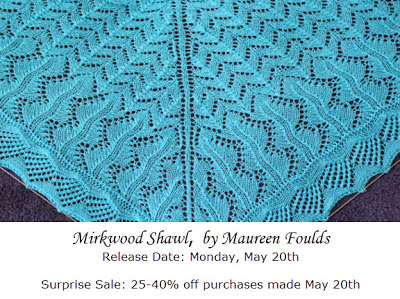A friend of mine once described me as "Switzerland - always neutral" because I tend to see all sides of an issue. Oh, I have opinions on things that matter to me. But I was blessed (cursed?) with an education that taught me to always look at something from many different angles.
As a knitter, I'm tickled pink when I find out that something I want to knit has a free pattern. I also believe that often you get what you paid for. I've seen some terrific free patterns and I've seen some really terrible ones, ones which I, as an experienced knitter, had difficulties deciphering.
But as a designer, I have to look at the effort I put into creating a pattern. What is that time worth to me and what value am I delivering? Robin made an interesting observation in her blog post, that often designers price based on what they think the market will bear rather than what will cover their costs. That is certainly one of the considerations I make when I prepare a pattern for publication.
When I design a pattern, I have some basic criteria:
- I want something I think will look attractive. I want it to be classic, clean and elegant. (Although I do have a few 'novelty' ideas bouncing around in my head.)
- I want it to hold my interest through the 25-30 hours required to knit a pair of socks.
- I want it to challenge me without being too difficult or fiddly.
- I want it to be simple enough to be fun without being boring.
- If it's a simple pattern that just happened to catch my fancy and didn't require much effort to convert into a sock, then it's a candidate for a free pattern.
- Conversely, some patterns require more effort to turn into a sock.
- The stitch patterns need to be re-written for in the round.
- Calculations need to be done to fit the stitch pattern into sock sizes.
- Adjustments need to be done to center the motifs and make the leg flow nicely over the heel and into the foot.
- Number of sizes available. Am I offering 1 size or multiple sizes? Each one needs it's own calculations, testing and pattern modifications
- Hours spent having the pattern test knitted, photographed and doing pattern revisions.
- Finally, what are similar patterns selling for? Too much and no one will buy it, too little and I'm undervaluing my efforts.
Clearly right now this is a labor of love. And I do love it. Every minute of it, otherwise I wouldn't do it.
I'm sure I had a point somewhere in all this. I can understand that people would rather have a free pattern than pay for one. Especially with the economic troubles that have plagued everyone the past several years. Many don't have the luxury of choosing to pay for a pattern. I totally understand.
But on the flip-side, if you want a quality pattern that has many hours of a person's time poured into perfecting it. A pattern that gives you hours of knitting enjoyment and results in a beautiful finished object. Then I think that pattern is well worth a few dollars given back to the designer. A designer who more often than not is carving time out their days spent with family or working a 'regular' job, to follow their passion and creativity.
Then there's the "but I can figure that out on my own" argument. As crafters we've all done that. We see something for sale in a store, or see it online and think "Oh, I can make that." And the more experience one has, the easier it would be to figure out how to replicate a design. Personally, I'm happy (and fortunately, able) to pay $5 to a designer for a pattern that's exactly what I want. That saves me the time spent doing gauge swatches and all sorts of math to figure out increases, decreases, necklines, and all that.
Simply put, everyone has their own reasons and criteria for deciding whether or not to pay for a pattern or look for a free version. There's no clear cut, one-size-fits-all answer. Which leaves me sitting here in "Switzerland" looking for the next project to cast on and wondering where my Swiss chocolate is.





















